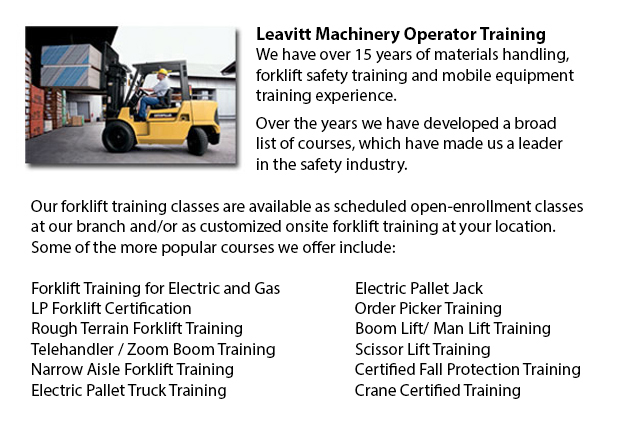
Rough Terrain Forklifts Training Barrie - There are essentially two kinds of lift trucks within the production industry, the rough terrain model and the industrial version. Rough terrain lift trucks appeared in the 1940's designed primarily for use on rough roads, ideal for lumberyards and construction sites, offering lifting power when there was no paved surface available.
Usually, nearly all rough terrain forklifts are run on a propane, diesel or gas driven internal combustion engines with a battery used for power. Several makers are experimenting with rough ground lift trucks that utilize vegetable matter and run from ethanol. Substantial pneumatic tires with deep treads distinguish these vehicles to allow them to grab onto the roughest ground type without any slippage or drifting.
Some of the earliest designs of rough ground lift trucks had the ability to haul in excess of 1000 lbs, using blades that could slide underneath the item, haul it slightly and shift it to another site. After ten years on the market, rough terrain lift trucks were reinforced with added carrying muscle, increasing the potential cargo to more than 2000 lbs. In the 1960's telescoping booms were added, enabling them to stack materials a great deal higher than in earlier years. The telescoping model characteristic is a staple of most all terrain forklifts today. Present designs are capable of managing well over 4000 lbs due to the constant enhancements through the years. Telescoping capability has also improved with some styles reaching a height of 35 feet. Worker safety has also become a focus with some all terrain lift trucks now manufactured are fitted with an enclosed cab for the operator, as opposed to the older open air seating capacity.
The all terrain forklifts accessible today work just as well on covered floors as on unpaved roads. These all terrain lift trucks are being marketed for their usefulness allowing organizations to transfer components from outside the plant to the inside or vice versa.
-
Boom Trucks
Boom Trucks Training Barrie - Boom vehicle are often applied by phone, cable television and utilities organizations as they have extended folded arms which are commonly folded over the roofs of business vehicles. On the end of the extension of extend... More -
Reach Trucks
Reach Truck Training Barrie - Reach trucks are loading machines used by varieties of organizations that keep up a stockroom facility or circulation center relating to the arrangement of completed commodities and equipment on pallets which are inserte... More -
Genie Forklift
Genie Forklift Training Barrie - Genie is a globally established company that enjoys the spirit of collaboration with their extensive network of allied consumers. Genie Industries prides itself on the intention of bringing materials and people higher... More -
Pallet Stackers
Pallet Stackers Training Barrie - Pallet stackers are a style of pallet jack that can be employed to stack, transport and haul cargo positioned on a pallet that are far too burdensome for manual lifting. Mostly these mechanisms are used to load and u... More -
Toyota Forklift
Toyota Forklift Training Barrie - Since 1992, Toyota Material Handling inc., U.S.A., often known as TMHU, has been the best selling lift truck supplier in the United States. Proudly celebrating more than 40 years of service, the Irvine, California si... More

Forklift Certification Barrie
TOLL FREE: 1-888-254-6157
Barrie, Ontario
forkliftcertificationbarrie.com
Email Us
About Us


